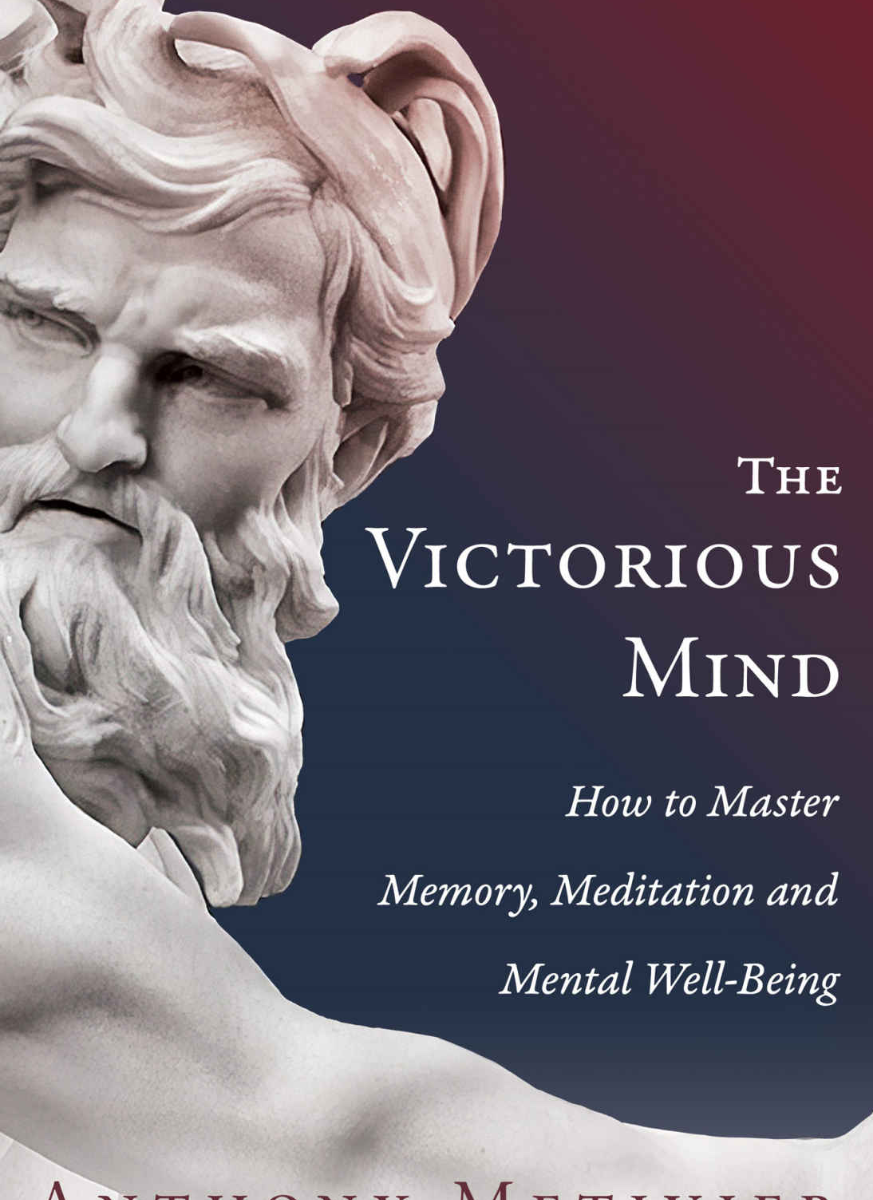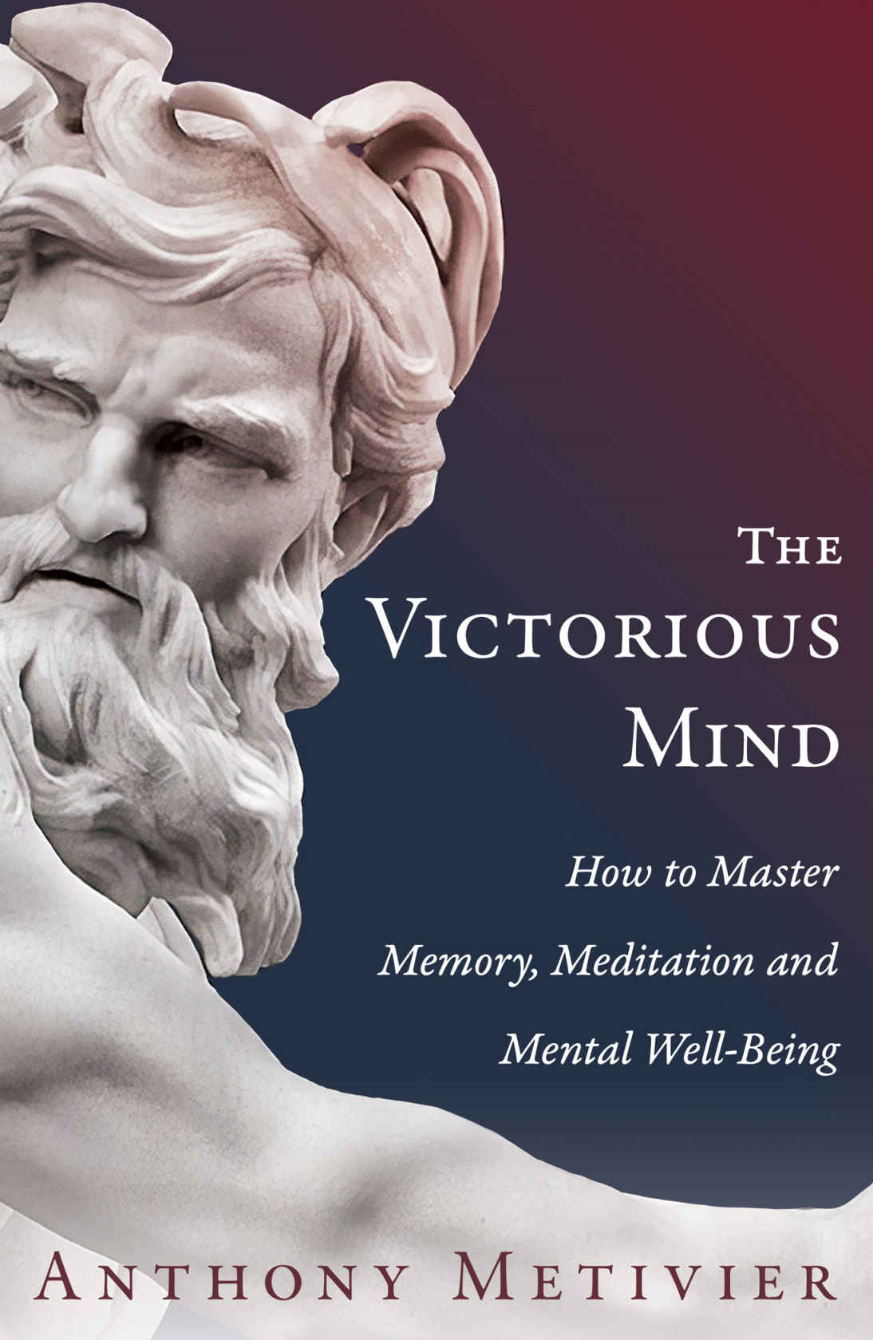Anthony Metivier is one of my mentors for a very good reason: he always has something new and exciting to tell. Recently he released a book called “The Victorious Mind“. This book happened to be a best-seller on Amazon for a while. This article is inspired by the book. I seriously recommend reading the book, as it is full of surprising revelations and very detailed about certain mental practices. I will allow you to enjoy the book with minimum spoilers, and here I will engage in a sort of literary dialogue with the author. I recommend The Victorious Mind for anyone interested in exploring these topics in greater depth with guidance from a qualified expert. And you can use it as a complementary reading for my own materials.
Self-help modalities
In my visualization and self help course which will be supplemented by a book in the future, I address various ways we use visualization to solve our personal issues. While I practiced meditation quite deeply and for many years, I prefer to use mainstream psychology and visualization for my daily troubles. This is a very effective and productive format optimizing efforts and results.
Anthony exposes an alternative path optimizing insight and connection to important traditions. You are also quite welcome to mix and match complementary methodologies. Anthony calls it “variety of the techniques” and I would call it “finding the right hammer for your nail”.
This article is about the connection between meditation and memory. It bridges between two of my lifestyle wellbeing sleep course and memory masterclass courses. You’re not required to pay the full price. Simply reach out to [email protected] and inquire about a substantial discount. Your satisfaction is assured.
Memory practice as a meditative technique
Memory practices used to be a meditative technique in many societies. Why do religious people of all kinds chant their prayers? They review their most important religious concepts. (This is not the only answer, but possibly the most comfortable answer)
What do we gain from reviewing our memory structures?
- We will not forget something we review daily.
- If the things we remember have an emotional charge, we amplify that emotion with each repetition.
- We can use the memories as a trigger to get into some mental state.
- Each time we review the memory it changes, as we add new meanings and associations.
In a way this is the opposite of mindfulness: in mindfulness, we are focused on our current state, and when we review memory in a meditative way we focus on the state anchored in the memory.
Sound, sight, thought and breath
Visualization is very fast, extremely versatile, and moderately easy to teach. It is also a failsafe technique: when you use it nobody can catch you or interfere. That’s why we usually focus our teaching around visualization.
If you mastered visualization, you may enjoy adding other senses. Usually, vocalization and subvocalization are very easy to work with, especially when learning languages. Audio associations tend to be slow, but more memorable and easy to infuse with emotional context. Chanting is a combination of the actual words and their music. This is one of the reasons certain meditations should be practiced with a master.
Controlling breath or touch or any other kinesthetic practice is important for meditation and rituals. This is similar to learning dance moves. When you know how to dance, it is easier to follow the music. I do not think you actually need it, but you can definitely enjoy it. For example, monotheistic religious practices, walking meditation, zen-meditation, certain bhakti techniques easily bypass this step while African and Sufi practices give it a huge weight.
Thought control is very hard to master. Even great masters occasionally fail. If you think you mastered your thoughts, you are probably doing something very wrong. It starts with attention to what we eat and how every small event makes us feel. We try to feel more positive and avoid toxic things. This is not always a linear path. For example, tantra goes directly to the source of distraction and bravely faces it while more traditional yoga tends to slowly distance the person from everything negative.
Each world of sensual experiences comes with a huge tool case of things to learn and to do. The practice is supposed to take your entire lifetime multiplied by a big number.
Meditation vs medication
Our western medicine tends to prescribe pills for any event. When we wake up we drink coffee as stimulative and when we go to sleep we may take a sedative, like a cookie and tea with milk. Americans often substitute these mild foods with more potent chemical drugs. As the body gets used to strong drugs, an arms race of ever more powerful medication may begin.
We need our medication for hard problems. For easy things, we can manage just fine with some mindful eating, possibly food supplement, and the placebo effect. Meditation is yet another harmless way to activate the placebo effect. You chant or breathe and visualize healing and the healing happens. Both physical and mental. The more potent the priming of the brain the stronger the effect. In homeopathic drugs, maximal potency is achieved by maximal dilution of the active materials. When we imagine our practice as potent and gamify it, there will be a visible effect on our well-being.
(A disclaimer: I personally combine meditation, food supplements, and western medicine for various healing purposes. So far successfully. Approximately once a year I get a chance to save someone’s life.)
Hypnotic triggers and ancient languages
People who meditate often chant in foreign languages they do not use in their everyday life. These chants are hypnotic triggers. Notice that deeply religious Jews often opt not to use Hebrew for everyday activities. If we assign everyday functions to the language, it starts to lose its potency. The Hebrew Bible itself often switches to ancient Aramaic for deeper and more powerful texts.
Recently I have been approached by several different people from all parts of the world who want to learn Sanskrit or Latin and some related languages. These are the old and dead languages with deep religious meaning and texts. I always found Sanskrit and Latin very intuitive as they follow the logic of the languages we use without introducing complex and somewhat barbaric sounds and grammatic structures.
If you are interested in a particular culture and practice, learning the relevant texts in the original language is always a great experience. I guess it is well worth the effort involved. You should not become fluent, yet the language will feel more natural and get an extra layer of meaning.
When you chant something in a foreign yet meaningful language, it is an easy way to get into a slightly hypnotic state.
What memory practice qualifies as meditative?
It is easy to understand why chanting meaningful phrases in an ancient language is both a memory practice and meditation. Choose what you chant wisely as others may be less tolerant than you think.
However, we can address it in another way. If we review our memorization of Platon and Aristotle, this is definitely a meditative practice. At least the monotheistic religions tend to treat philosophy this way.
Is math meditative? For some people it definitely is. There are some strange clarity, symmetry, and minimalism in math. Solving math problems is not unlike zen koans: we often need to use our entire brain and integrate our daily experiences. Our bodies, the molecules that form our bodies and the stars in the sky follow the same laws. As long as you do not use something as strange as quantum physics and general relativity, you might be fine.
Notice that the idea here is separating profane from the holy. Whatever science we use to get meditative should not be the science we use in our main job. Otherwise, the memories get contaminated and the hypnotic effect disappears.
Not a magic pill
Combining memory techniques with meditation can be seen as central to the concept of magic, though it’s not a magical fix. Be prepared for substantial effort with uncertain outcomes. The mechanisms behind these practices remain elusive, and individuals have varying sensitivities to hypnotic effects. For example, meditation might have partially alleviated someone’s bipolar disorder but had a different impact on me. I often use it to enhance focus and systematically review certain processes.
When focusing on someone’s health, you might use chakras as focal points to target specific body systems. In a meditative state, the brain experiences slow waves that facilitate comprehensive mental activity. Engaging in specific rituals or visualization techniques can induce a mild hypnotic trance, allowing the brain to function in new ways.
It’s not a magical solution, but rather a different mode of brain functioning. If we direct our full attention to a problem for an extended period, some form of “magic” might occur—or it might not. Personally, my success rate is about 50%, but it’s certainly worth a try.

Get 4 Free Sample Chapters of the Key To Study Book
Get access to advanced training, and a selection of free apps to train your reading speed and visual memory


